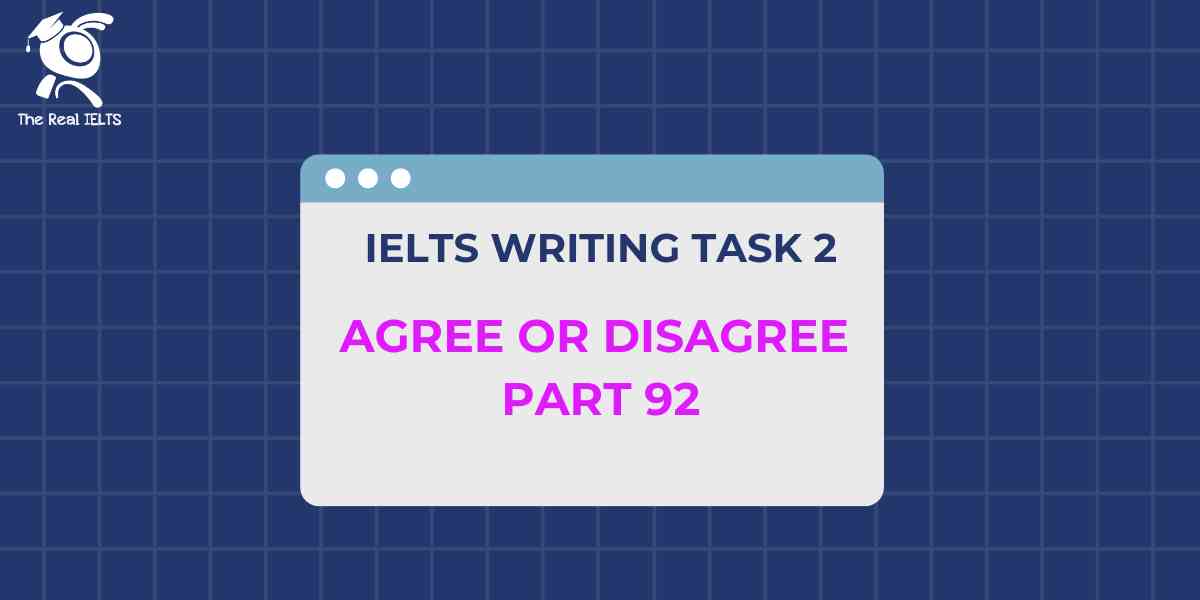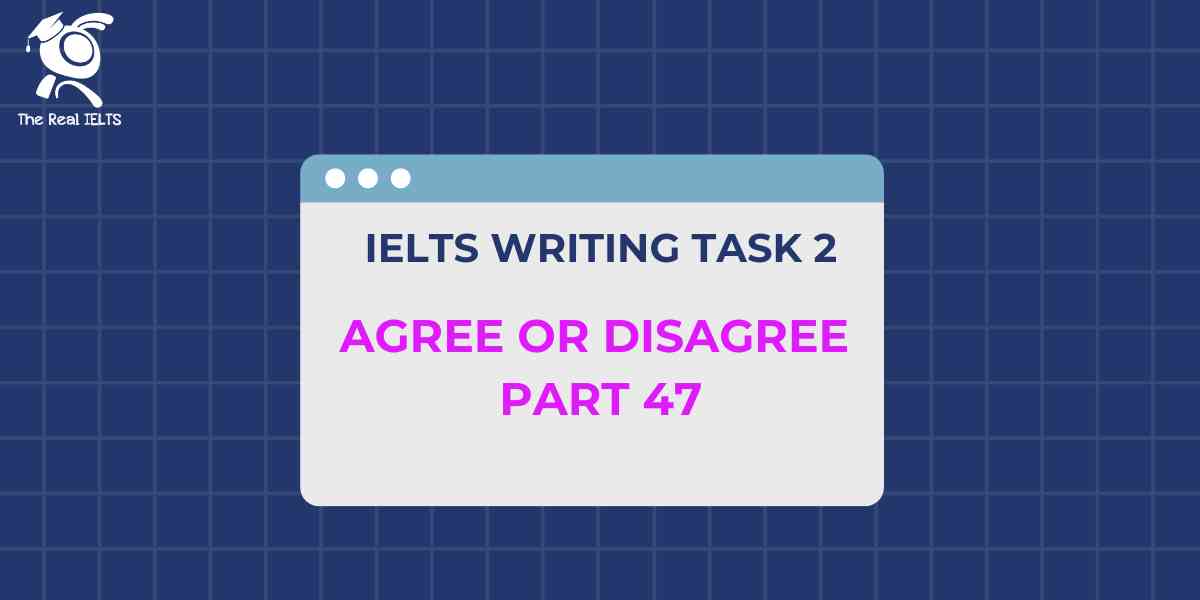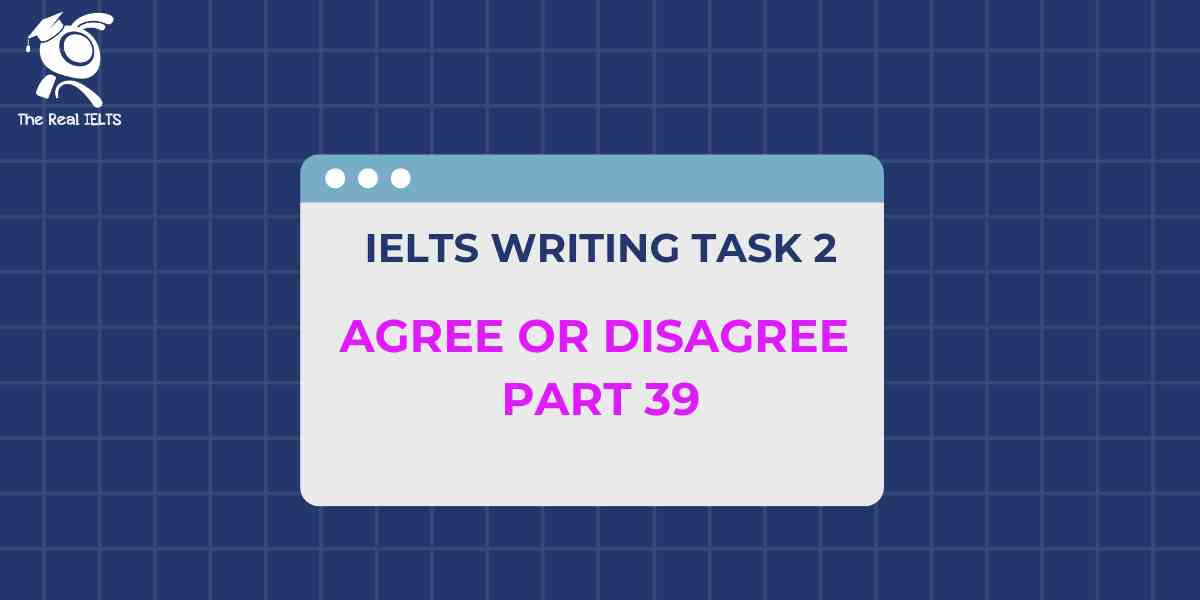



IELTS Writing task 2 Positive or Negative freelance
Đề bài IELTS Writing Task 2 dạng Positive or Negative freelance


IELTS Writing Task 2 dạng Agree or Disagree Part 92
Đề bài IELTS Writing Task 2 dạng Agree or Disagree Part 92 You should spend about 40 minutes on this task The government should provide free public transportation. To what extent do you agree or disagree? Write at least 250 words. Giải mẫu IELTS Writing Public transportation plays a crucial role in the daily lives of millions of people, and the idea of making it free is a topic of significant debate. While I acknowledge the potential benefits of free public transportation, I believe that it is not entirely feasible for the government to provide it without some drawbacks. Hence, I partially agree with the statement. On the one hand, offering free public transportation can lead to several positive outcomes. Firstly, it would significantly reduce the number of private vehicles on the roads, thereby alleviating traffic congestion and decreasing air pollution. This, in turn, would contribute to a healthier environment and improve the quality of life for city dwellers. Secondly, free public transportation would provide equal access to mobility for all citizens, especially those from low-income backgrounds who might otherwise struggle with transportation costs. This could lead to greater social equity and inclusiveness, as well as enhance access to education and employment opportunities. However, there are several challenges associated with providing free public transportation that must be considered. The primary concern is the financial burden it would place on the government. Public transportation systems require substantial funding for maintenance, operation, and expansion. If transportation were free, the government would need to find alternative sources of revenue, potentially leading to higher taxes or the reallocation of funds from other critical public services such as healthcare and education. Additionally, free transportation could lead to overcrowding and a decline in service quality, as the increased demand might surpass the system’s capacity to accommodate all users efficiently. Moreover, not all regions would benefit equally from free public transportation. Urban areas with well-developed transportation networks might see significant advantages, but rural and less developed regions could still face accessibility issues due to limited infrastructure. As a result, the benefits of free public transportation might not be uniformly distributed across the country. In conclusion, while free public transportation offers notable environmental and social benefits, the financial and logistical challenges it presents cannot be overlooked. Therefore, I partially agree with the idea, suggesting that instead of making public transportation completely free, governments could consider subsidizing fares for those in need and investing in improving the overall quality and coverage of transportation networks. This approach would strike a balance between accessibility and sustainability. Cấu trúc ngữ pháp và cấu trúc câu Cấu trúc câu và cấu trúc ngữ pháp Các từ kết nối (Connectors) Các từ vựng tiếng Anh cần lưu ý trong bài viết Đọc thêm các bài Luyện Thi IELTS khác trong link nhé.


IELTS Writing Task 2 dạng Agree or Disagree Part 83
Đề bài IELTS Writing Task 2 dạng Agree or Disagree Part 83: You should spend about 40 minutes on this task The government should invest more in renewable energy sources. To what extent do you agree or disagree? Write at least 250 words. Giải mẫu IELTS Writing In recent years, the global focus on environmental sustainability has highlighted the importance of renewable energy sources. While some argue that governments should prioritize investment in these alternative energy options, others believe that this focus might detract from other crucial areas of development. This essay will discuss both perspectives and explain why I agree to a significant extent that governments should increase their investment in renewable energy sources. Firstly, the most compelling reason for government investment in renewable energy is the urgent need to combat climate change. Fossil fuels, which are currently the primary source of energy in many countries, are a significant contributor to greenhouse gas emissions. Transitioning to renewable energy sources such as solar, wind, and hydroelectric power can substantially reduce these emissions, helping to mitigate the adverse effects of global warming. Moreover, renewable energy is a sustainable and inexhaustible resource, unlike fossil fuels, which are finite and will eventually be depleted. Investing in renewable energy infrastructure now can ensure a stable and long-term energy supply for future generations. Secondly, increasing investment in renewable energy can also have substantial economic benefits. The renewable energy sector has the potential to create numerous jobs in manufacturing, installation, and maintenance. This can be particularly beneficial in diversifying economies and providing employment opportunities in regions that have been economically disadvantaged. Furthermore, by investing in domestic renewable energy production, governments can reduce their dependence on imported fossil fuels, thereby improving energy security and reducing vulnerability to international market fluctuations. However, it is important to acknowledge that transitioning to renewable energy is not without challenges. The initial costs of developing renewable energy infrastructure can be high, and the intermittency of some renewable sources, like solar and wind, requires the development of advanced storage solutions and grid management systems. Nonetheless, these challenges are not insurmountable, and with the rapid advancements in technology and economies of scale, the costs are gradually decreasing. In conclusion, while there are challenges associated with the transition to renewable energy, the long-term environmental, economic, and security benefits make it a worthwhile investment. Therefore, I believe that governments should indeed invest more in renewable energy sources, not only to address the pressing issue of climate change but also to promote economic growth and energy independence. Cấu trúc ngữ pháp và cấu trúc câu Cấu trúc câu và cấu trúc ngữ pháp Từ kết nối (connectors) các câu và các đoạn Các từ vựng tiếng Anh cần lưu ý trong bài viết Đọc thêm các bài Luyện Thi IELTS khác trong link nhé.


IELTS Writing Task 2 dạng Agree or Disagree Part 47
Đề bài IELTS Writing Task 2 dạng Agree or Disagree Part 47:


IELTS Writing task 2 Positive or Negative sustainable fashion
Đề bài IELTS Writing Task 2 dạng Positive or Negative sustainable fashion


IELTS Writing Task 2 dạng Agree or Disagree Part 38
Đề bài IELTS Writing Task 2 dạng Agree or Disagree Part 38:





